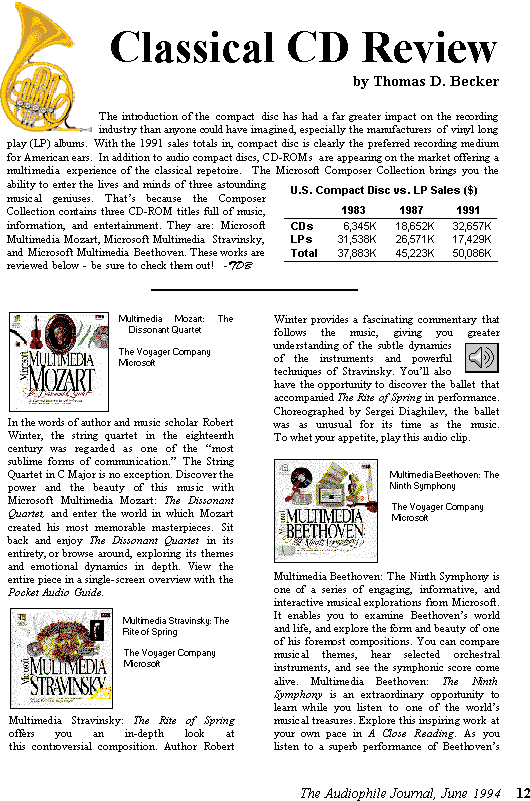
As data becomes the major focus of interface design, its content is what occupies the user's attention, not the application managing it. In such a design, data is not limited to its native creation and editing environment; that is, the user is not limited to creating or editing data only within its associated application window. Instead, data can be transferred to other types of containers while maintaining its viewing and editing capability in the new container. Compound documents are a common example and illustration of the interaction between containers and their components, but they are not the only expression of this kind of object relationship that OLE can support.
Figure 11.1 shows an example of a compound document. The document includes word-processing text, tabular data from a spreadsheet, a sound recording, and pictures created in other applications.

Figure 11.1 A compound document
How was this music review created? First, a user created a document and typed the text, then moved, copied, or linked content from other documents. Data objects that, when moved or copied, retain their native, full-featured editing and operating capabilities in their new container are called OLE embedded objects.
A user can also link information. An OLE linked object represents or provides access to another object that is in another location in the same container or in a different, separate container.
Generally, containers support any level of nested OLE embedded and linked objects. For example, a user can embed a chart in a worksheet, which, in turn, can be embedded in a word-processing document. The model for interaction is consistent at each level of nesting.